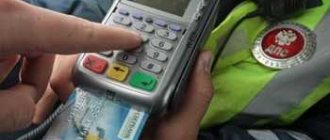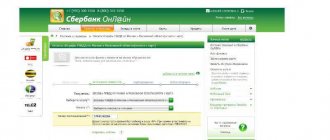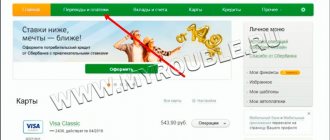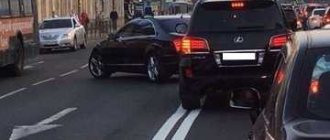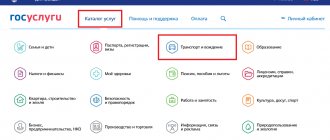How is video recording of violations carried out?
On straight sections of the roadway with an increased risk of accidents, the most frequent cases of drivers exceeding the speed limit, etc. cameras are installed. The devices are used to record unlawful actions of drivers without the participation of traffic police officers.
Advantages of registrars:
- recording all cases of non-compliance with traffic rules;
- exclusion of acts of corruption.
Devices are placed on the roadway so that they can be seen by motorists. A “Video recording” sign is attached nearby.
Recorders record the following traffic violations:
- parking rules;
- order of driving on the side of the road;
- intersections of solid lines, intersections with traffic lights;
- improper overtaking;
- driving into the lane of oncoming traffic;
- speeding on the roadway – error of readings 2 km.
Unlawful actions of motorists are recorded by photographing and recording on video. The camera records not only the moment of the violation, but also the state license plate of the car. Information about the committed act is sent to the relevant Center. Here the owner of the car is found using the license plate number. They issue a penalty and notify the citizen about it.
What violations are fined for?
Cameras monitor numerous violations. After they are recorded, a resolution is drawn up, and only then information about the fine appears on various electronic platforms. Violations are monitored as standard:
- exceeding the speed limit while driving around the city or highway;
- intersection of a solid or double solid line;
- driving into the oncoming lane in places where this maneuver is prohibited;
- stopping or parking in a prohibited place;
- driving on the side of the road, sidewalk or tram tracks;
- crossing the stop line in front of a traffic light;
- failure to comply with road signs;
- driving through a red traffic light;
- driving in a lane intended for minibuses or buses;
- driving a car without using seat belts;
- performing maneuvers that led to the formation of a traffic jam at the intersection;
- driving without turning on the low beam or running lights;
- communication via cell phone while driving;
- refusal to give way to people crossing the road at a pedestrian crossing;
- failure to use turn signals.
Attention! Cameras used by traffic inspectors can be stationary, portable or mobile.
Fixation means not only allow you to punish violators, but also identify cars that are listed as stolen. Usually people are punished for breaking the speed limit. If a motorist stops in the wrong place, then his car is towed, so he will have to not only pay a fine, but also pick up the car from the impound lot.
How long does it take to process information and how long does it take to receive a fine?
Registrars record a large number of violations every day. Information about drivers' non-compliance with traffic rules is transmitted to the traffic police. Here they are processed, after which a decision is made to impose a penalty.
The time limits for consideration of cases of administrative offense are specified in Article 29.6 of the Code of Administrative Offenses of the Russian Federation. In paragraph 1, which was amended by Federal Laws No. 69-FZ of April 30, 2010, No. 307-FZ of October 14, 2014, it is stated that the analysis of information received from technical means that have photo and video recording options, operating in automatic mode, occurs within 15 days.
Algorithm of traffic police officers:
- Studying information.
- Search for car owner by state license plate.
- Drawing up a protocol on the offense committed.
- Entering information about non-compliance with traffic rules into the database.
- Formation of a decree on collection.
After this, the driver is notified of the sanctions through Russian Post.
Court and illegal fine
Before starting legal proceedings regarding the illegal imposition of a fine, it is necessary to determine which court to go to. The territorial jurisdiction of an institution can be determined using the Justice website. If the fine was issued by the inspectorate, then you should go to the first instance court (district, city or world). But, if the decision was made by the court, then you should go for an appeal to an even higher authority (for example, the regional one). The authority to which the complaint must be filed has been determined and the decision has been sent for consideration. Again, you can file a complaint only within 10 days after the driver has a copy of the decision in his hands. If during this period he does not have it, the driver has the full right to file a petition to renew the appeal period.
The court, unlike the traffic police, can consider a complaint not for 10 days, but for as long as 2 months. This difference in time is explained by the fact that the judicial authority must study all the evidence in detail and come to an objective verdict. But, as in any case, this also has its exceptions. Consideration of the application by the court can last only one day if the person who received the fine is also under arrest.
After examining the case, the court may come to the following decisions:
- The complaint is dismissed and the decision remains unchanged.
- Approve the complaint, remove the fine, and close the case.
- Cancel the fine and redirect the opened case for further consideration. This occurs if, while the court is studying the complaint and accompanying documents, new facts and circumstances arise.
What is the average period between a violation and the arrival of a fine?
Information about the driver’s non-compliance with traffic rules from the recorders is instantly transmitted to the Processing Center. Here the data is processed within 15 days. Based on the information, a resolution is formed. The operator is obliged to send it to the driver within 3 days.
Thus, the total time to receive a notice of collection after the commission of an offense is 18-20 days. The driver has to wait that long for a decision. From this moment on, he is given 1.5 weeks to appeal the decision, 2 months to pay the fine.
It happens that a citizen receives information about sanctions later than 3 days after the decision is issued. This situation arises if a letter with documents is sent by mail. Delivery of correspondence takes up to 3 weeks.
This leads to the following consequences:
- The violator cannot pay the fine with a 50% discount. The amount of the penalty is reduced if the money is transferred to the recipient within 20 days after the decision is made. When the notification arrives late, the citizen is deprived of this opportunity.
- The period for appealing the decision has expired. If this happens, you will have to file a petition to extend the statute of limitations.
To avoid such a situation, you should monitor the imposed penalties.
Notice of fine payment
Recently, CAFAP departments have begun sending out notices of unpaid fines to violators.
A traffic police officer monitors the status of the fine in the database and if he sees that the fine has not been paid within 20 days (that is, during the period when the 50% amount is provided), then a reminder is sent to the driver. Although no one really knows exactly how many days such a notification will be sent.
The essence of the notification is to inform about the presence of an outstanding fine and, in case of refusal to pay, they offer to report to a TsAFAP employee after 70 days to draw up a protocol under Art. 20.25 Code of Administrative Offenses of the Russian Federation. That is, they will be subject to a double fine for failure to pay the main amount.
If such a notice was received, but you did not know about the fine, then you need to write a letter to TsAFAP about re-providing copies of materials from the video recording camera. And only after making sure that such a case really happened can you pay the bill.
How to check fines from cameras yourself
There are several ways to view sanctions. This allows you to choose the appropriate option.
Through State Services
In this case, a registered account is required. It only takes a few minutes to create your personal account. To do this, you need to log in to the site and fill out the form.
To check for penalties, proceed as follows:
Related Posts
Amount of fine for lack of technical inspection in 2021
- Log in to the portal.
- Go to the “Checking fines” section.
- Click the “Fill out application” button. The form contains information about your driver's license and registration certificate.
- Send an appeal.
It takes a few minutes to check collections in the traffic police database, after which the user receives information about existing debts. You can also pay the fine on the website.
Via the official website of the traffic police
To find out if there are penalties in this way, proceed as follows:
- Go to the inspection portal.
- Select the “Check fines” section.
- Enter data about the state registration plate or STS.
- Send a request.
After a few seconds, the system provides information about the presence of debt obligations.
Other options
You can find out about penalties imposed based on data from video cameras in other ways, namely:
- Through the Autocode website. Here is information about fines for unpaid parking. Drivers in the capital can use the portal.
- Via SMS service. To do this, you need to send information about your STS and driver’s license to number 9112. In the response message, the citizen receives information about debt obligations to the traffic police.
- Yandex electronic wallet. Money. To find out if there are fines, go to the website and open the “Traffic Police Fines: Check and Payment” tab. Fill out the form - indicate information about the VU, STS. Press the corresponding button. The system begins searching for debts and provides the necessary information. Here you can make payment. If you subscribe to the newsletter when filling out the application, you will receive timely information about the imposed penalties by email.
- Through the Yandex application. Fines. To do this, the program is downloaded and installed on a mobile device. To check the existence of debt obligations, fill out a form in which you enter the state license plate and registration certificate data. Click the “Check fines” button. You can deposit funds here.
- Through Internet banking. Clients of Sberbank, Tinkoff, etc. can view the availability of penalties. A registered account is required to perform the operation. Log in to the system, find the sanctions check section, enter your driver’s license number, and submit a request.
- Through bailiffs. Information on penalties is presented in the “Bank of Enforcement Proceedings” section. Information does not arrive here immediately after the punishment is imposed, but if the citizen has not repaid the debt within the prescribed period. On the website you can close obligations to avoid blocking bank cards, bans on traveling abroad, etc.
Traffic police fines database
This resource contains complete and reliable information about all unpaid material penalties. The database contains information about every motorist in the Russian Federation who was caught violating traffic rules.
The database contains the following data:
- information about the vehicle the person was driving at the time of the violation;
- place and time of drawing up the protocol;
- information about the car owner;
- the number of the article of the administrative code violated by the motorist;
- date of the decision on the violation.
If the violation was recorded by special equipment, only information about the owner of the car is entered into the database. This means that even if a stranger is driving, the fine will come to the owner. The name of the real violator will be included in the documents only when the motorist is stopped in person by a traffic inspector.
Procedure for challenging fines
The driver is given 10 days after the decision is issued to appeal the decision if he does not agree with the imposed penalty.
To do this, file a complaint stating:
- name of the authority to which the appeal is sent;
- personal data;
- information about the decision made;
- essence of the claim;
- date;
- signature.
Attached to this document:
- protocol;
- identification;
- evidence of innocence.
To challenge a fine, follow the following procedure:
- Form a complaint.
- Collecting documents.
- Contact the traffic police department.
- They are waiting for an answer. 10 days are allotted for this.
If a negative decision is made, the driver has the right to go to court. To do this, they provide a package of documents that is supplied to the traffic police. If the citizen's claim is not satisfied, a fine will have to be paid.
Someone else received a traffic police fine: what to do with strange letters
A motorist from Moscow began receiving strange fines for speeding. Decrees about administrative violations began to regularly arrive in her mailbox, but the only match was her home address. The number and make of the car were different: in all the photographs one could see a BMW 7-Series 750Ld sedan - a car of a much higher class than that of the recipient of the letters. Although the foreign car had nothing to do with her, the motorist became worried and turned to one of the traffic police departments with a request to sort out the strange situation. “The inspectors advised me just not to worry,” the motorist shared on social networks.
Facebook entry for user Irina Beglova
Another car owner told Autonews.ru about a similar situation. For about two years, he received letters about overdue loans and “chain letters” to a person unknown to him. Complaints to the bailiffs did not help for a long time, but eventually the letters stopped coming. Let's talk to experts about whether to worry in such cases.
What to do with other people's decisions
A member of the Public Council at the Main Directorate of the Ministry of Internal Affairs of Russia for Moscow, Anton Shaparin, is confident that recipients of other people’s fines have nothing to worry about.
“Some motorists have come up with this myth: if they do not receive paper notices, then they can allegedly prove in the courts that the fines did not reach them,” says Shaparin. “Therefore, when registering vehicles with the traffic police, they simply deliberately dictate other people’s addresses. But if you haven’t received the letter, it means absolutely nothing; such a person simply loses the opportunity to promptly challenge the fine within the allotted ten days. If he does not check electronic applications at the same time.”
Articles July 18, 2021 Double cars: the traffic police came up with a scheme on how to catch them
Articles July 11, 2021 Other people's fines are coming: the traffic police explained what to do
Also, letters may begin to arrive due to errors - with the same registration in the traffic police, the car owner may not notice a typo in the house or apartment number. This leads to a similar result.
“If you open a letter and see someone else’s data there, I recommend that you simply ignore it. You can, of course, contact the traffic police and ask them to double-check the address, but this is not part of the department’s responsibilities. You can search for a person on social networks, but you will spend a lot of time searching for a complete stranger who may not listen to you,” explained a member of the Public Council under the Main Directorate of the Ministry of Internal Affairs of Russia.
But Shaparin called “doubles” - cars that drive with fake license plates - a serious cause for concern. Fines for violations of their drivers go to the motorists to whom these cars are registered. And here you need to contact the police as soon as possible.
Options for checking the appearance of fines in the traffic police database
The owner of a car is not limited to only one way to check his fines using the State Traffic Inspectorate database.
To obtain information, you can use:
- the website of the State Traffic Inspectorate itself;
- service "GosAvtokod";
- resource "Yandex.money";
- application from Yandex “Yandex.fines”;
- personal account of a Sberbank client through the application;
- website of the banking organization Tinkoff.
Thanks to these resources, the driver will be able to obtain the information of interest about unpaid material penalties in a matter of minutes at any time and in any place. You can use any “assistant” at the discretion of the vehicle owner.
However, the traffic police urges motorists to use only trusted resources in order to preserve personal data.
You can get information at:
- Vehicle registration number;
- registration certificate number;
- number of the drafted resolution;
- VU (driver's license) number.
The only thing that can prevent you from quickly familiarizing yourself with current fines is malfunctions in the programs. But the problem is easily solved, just use another service. In addition, some sources offer motorists additional notification methods.
So, in some programs, the car owner can set up an SMS notification about incoming fines. The citizen can also be automatically informed about the violation committed via e-mail. These methods allow you to promptly find out about the presence of unpaid receipts and repay debts on time.
